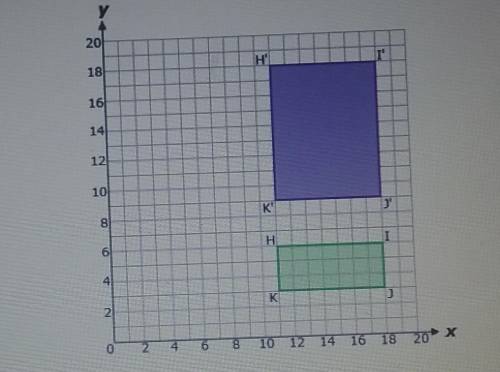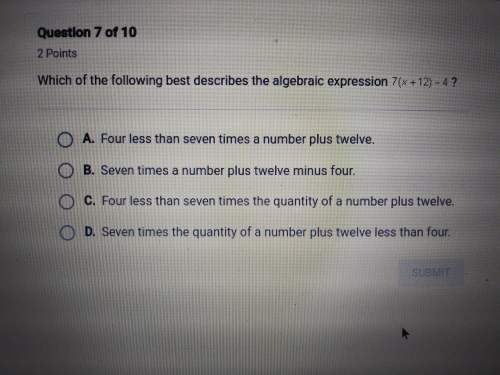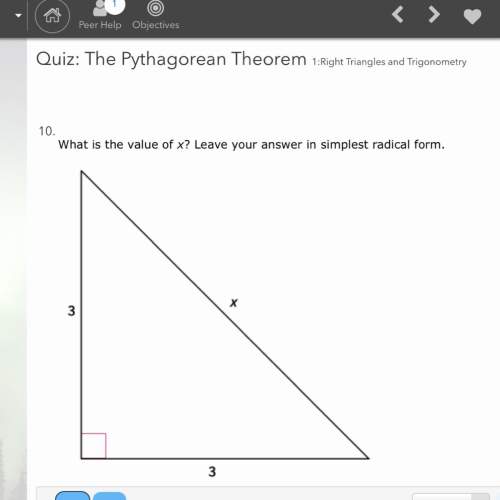I need to find the rule for the transformation from quadrilateral HIJK to H'I'J'K'
...

Mathematics, 18.12.2020 04:10, vkyles84
I need to find the rule for the transformation from quadrilateral HIJK to H'I'J'K'


Answers: 3
Other questions on the subject: Mathematics

Mathematics, 21.06.2019 15:40, FailingstudentXD
Each of the walls of a room with square dimensions has been built with two pieces of sheetrock, a smaller one and a larger one. the length of all the smaller ones is the same and is stored in the variable small. similarly, the length of all the larger ones is the same and is stored in the variable large. write a single expression whose value is the total area of this room. do not use any method invocations.
Answers: 1

Mathematics, 21.06.2019 22:30, campilk5
Sketch the vector field vector f( vector r ) = 8vector r in the xy-plane. select all that apply. the length of each vector is 8. the lengths of the vectors decrease as you move away from the origin. all the vectors point away from the origin. all the vectors point in the same direction. all the vectors point towards the origin. the lengths of the vectors increase as you move away from the origin.
Answers: 2

Mathematics, 22.06.2019 00:30, ashled7789
Which number can each term of the equation be multiplied by to eliminate the decimals before solving? 5.6j- 0.12=4+1.1j
Answers: 3

Mathematics, 22.06.2019 01:00, SpeechlessZzz9920
For every corresponding pair of cross sections, the area of the cross section of a sphere with radius r is equal to the area of the cross section of a cylinder with radius and height 2r minus the volume of two cones, each with a radius and height of r. a cross section of the sphere is and a cross section of the cylinder minus the cones, taken parallel to the base of cylinder, is the volume of the cylinder with radius r and height 2r is and the volume of each cone with radius r and height r is 1/3 pie r^3. so the volume of the cylinder minus the two cones is therefore, the volume of the cylinder is 4/3pie r^3 by cavalieri's principle. (fill in options are: r/2- r- 2r- an annulus- a circle -1/3pier^3- 2/3pier^3- 4/3pier^3- 5/3pier^3- 2pier^3- 4pier^3)
Answers: 3
Do you know the correct answer?
Questions in other subjects:


History, 24.06.2019 17:30




Biology, 24.06.2019 17:30


History, 24.06.2019 17:30









